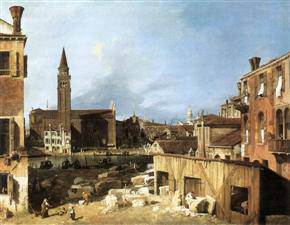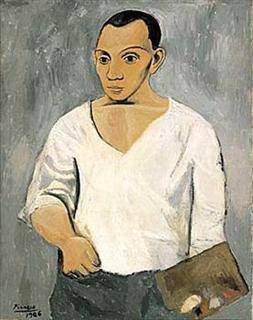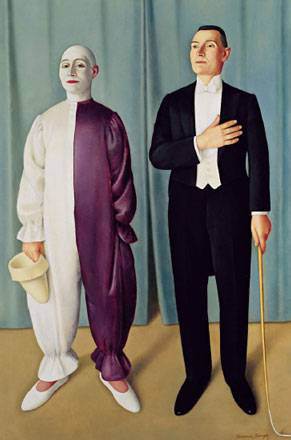
Canaletto
The Stonemason’s Yard
c.1725
London, National Gallery
‘Venice: Canaletto and His Rivals’ in Washington The National Gallery of Art, Washington, presents 20 of Canaletto’s finest paintings of Venice with 33 by his most important contemporaries, including Gaspar Vanvitelli, Luca Carlevarijs, Michele Marieschi, Bernardo Bellotto, and Francesco Guardi
February 20 – May 30, 2011
]]>
Source: National Gallery of Art, Washington
The entrance to the exhibition will feature a 35-foot-long gondola that once belonged to the American painter Thomas Moran and is now in the collection of the Mariners’ Museum, Newport News, VA. One of the world’s oldest gondolas, it will visually “transport” visitors to the lagoon city celebrated in the views of Canaletto and his rivals.
Europe has many beautiful cities, but only Venice inspired a school of view painters who depicted the city, stone by stone and canal by canal, capturing views that are still recognizable today. The genre of vedute (view paintings) culminated in Venice in the 18th century with Giovanni Antonio Canal (1697–1768), known as Canaletto.
In 1719 Canaletto, who was trained as a painter of theatrical scenery, visited Rome where he was inspired to begin view painting. In the late 1720s, in response to market demand, he began to replace the somberness of his earlier works with views drenched in sunlight. Within a decade, Canaletto dominated the genre and the exhibition will include many of his greatest masterpieces, from such prestigious collections as that of Her Majesty Queen Elizabeth II and National Gallery London.
Throughout the exhibition Canaletto’s major works will be juxtaposed with those of his rivals to illuminate their complex relationships. Organized chronologically, the exhibition includes a pivotal work by Gaspar Vanvitelli (1653–1736), Canaletto’s precursor and the founding father of Italian view painting, titled The Molo from the Bacino di San Marco (1697). Trained in the Netherlands and based mostly in Rome, Vanvitelli depicted a Venice distinctly calm in comparison to the work of Canaletto and his contemporaries who followed.
One of Vanvitelli’s successors and the first view painter in Venice to depend on foreign patronage was Luca Carlevarijs (1663–1729), an artist Canaletto soon eclipsed. Visitors to the Gallery will see important early works by Canaletto, such as The Piazza San Marco, Looking East (1723), on view next to similar subjects by Carlevarijs.
The festivals, regattas, and ceremonies of Venice will be showcased in the exhibition through several important works, including Canaletto’s The Molo from the Bacino di San Marco on Ascension Day (c. 1733–1734). Historical events of the city were also recorded by the view painters, such as in Carlevarijs’ pioneering composition The Reception of the British Ambassador Charles Montagu, 4th Earl of Manchester, at the Doge’s Palace, 22 September 1707 (c. 1707–1708).
Canaletto’s closest competitor was the short-lived but highly original Michele Marieschi (1710–1743), the most spontaneous of the view painters. Marieschi employed characteristically broad brushstrokes that come to light in The Bacino di San Marco (about 1739-1740).
At the height of Canaletto’s fame, his workshop offered the finest training a view painter could receive. He taught his nephew Bernardo Bellotto (1721–1780), whose views are sometimes confused with those of his uncle. A unique characteristic of Bellotto’s style is his vibrant blue sky, seen most dramatically in The Piazzetta, Looking North (c. 1743).
The development of Venetian view painting culminated with Francesco Guardi (1712–1793), whose works close the exhibition. A rival who appeared during the final decade of Canaletto’s life, Guardi anticipated the rise of romanticism in the 19th century, and emphasized the fragility of Venice rather than its permanence. In San Giorgio Maggiore and the Giudecca (about 1780), Guardi depicts a gentle, poetic impression of the city.
Follow us on:


